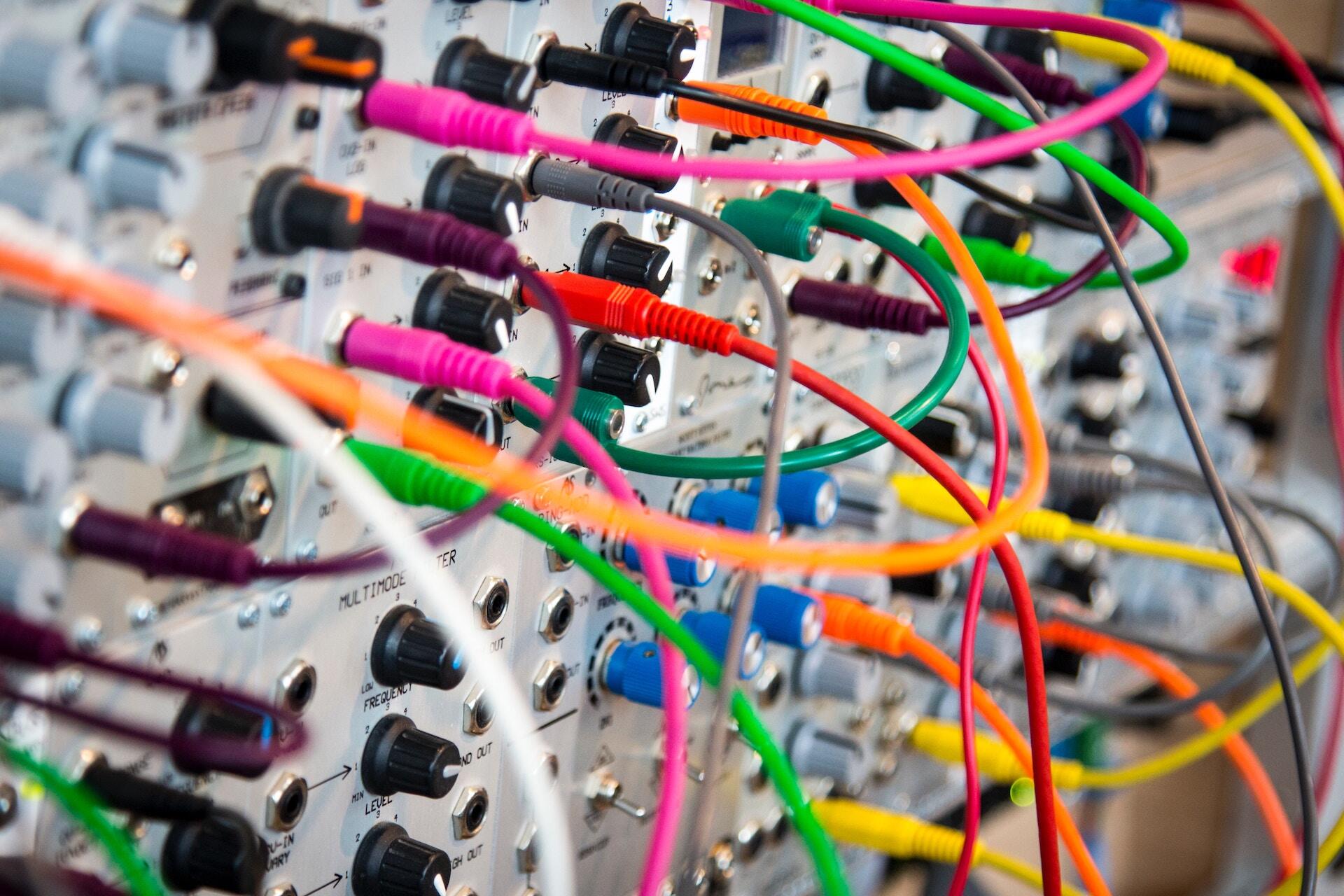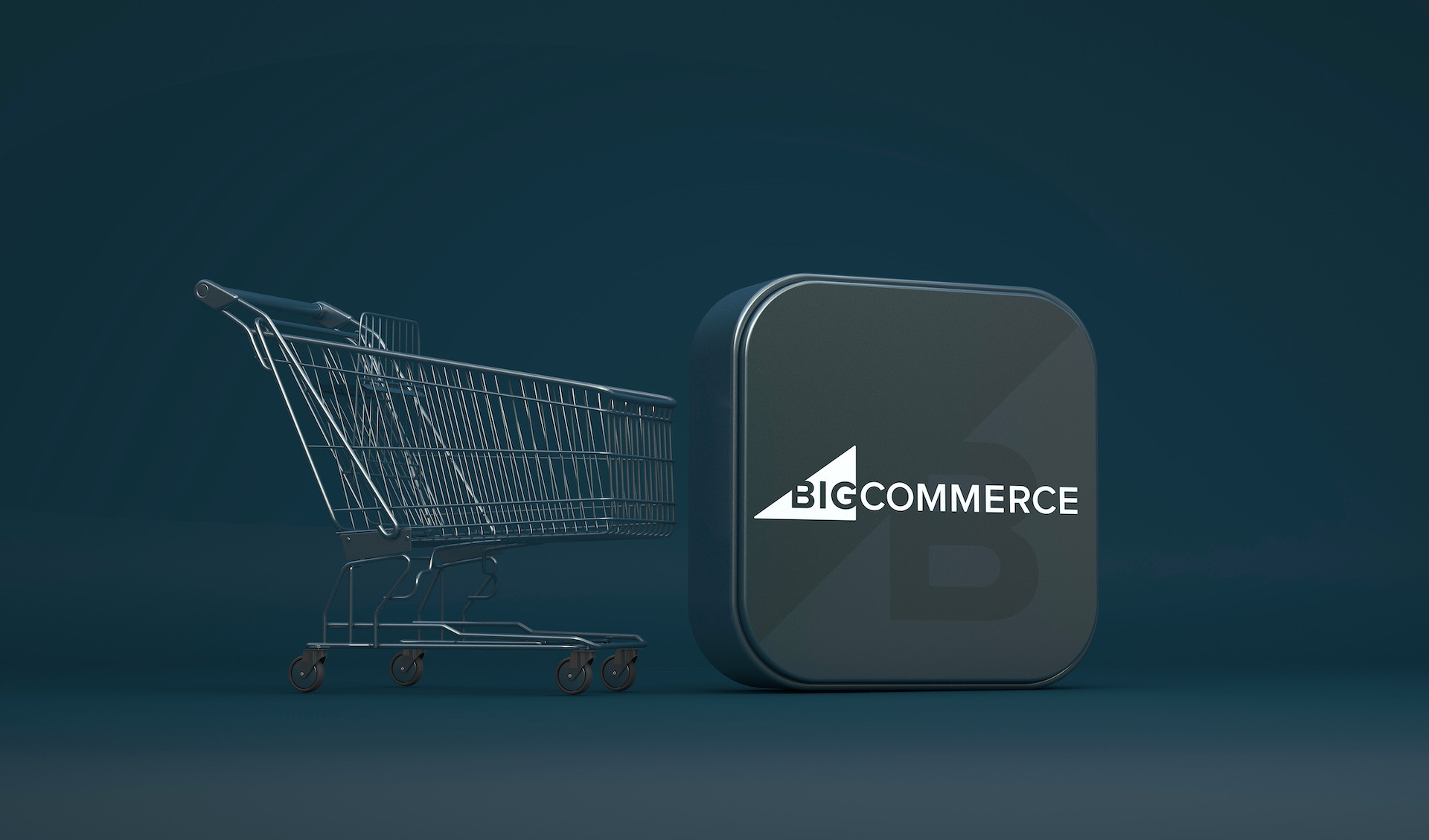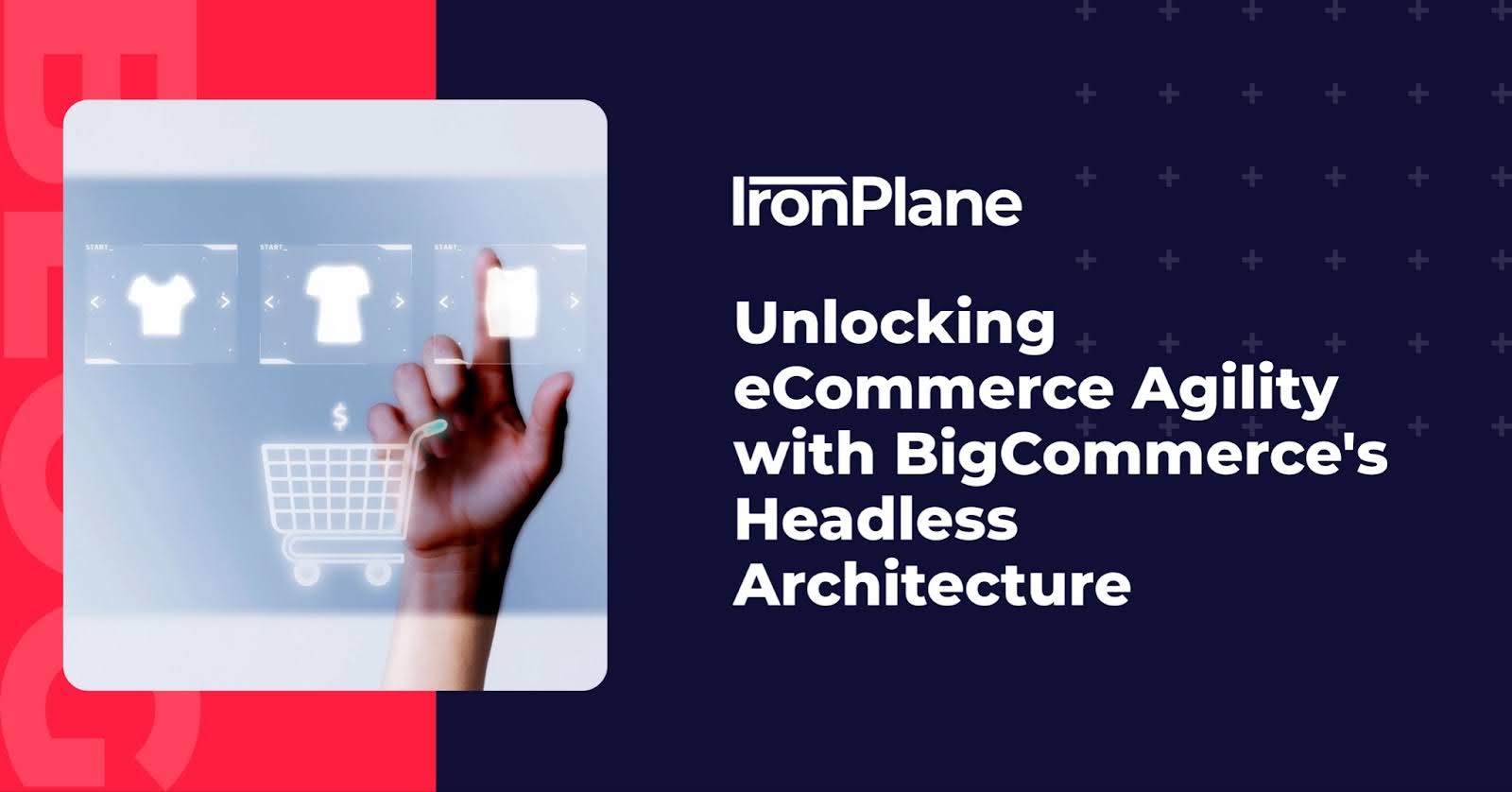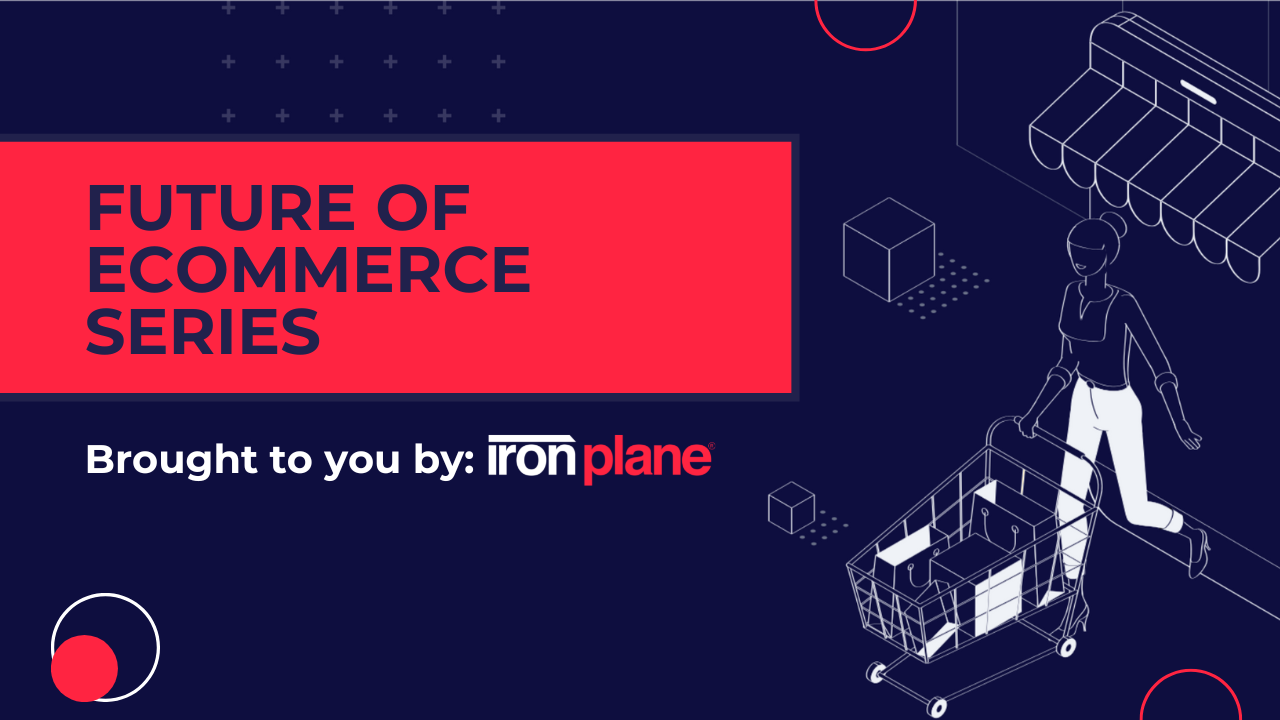BigCommerce's B2B Capabilities: A Guide for B2B eCommerce Businesses
B2B eCommerce businesses need powerful platforms to manage their operations and deliver memorable customer experiences — BigCommerce can be the solution.

The word “headless” is thrown around in the eCommerce world a lot.
But what does it actually mean?
To find out, we sat down with Kyle Capsalis, Strategic Partner Manager at BigCommerce.
At BigCommerce, headless has been a top six initiative for the company for a long time. And as the company continues to grow their customer base — particularly in the enterprise space — the continue to head in the headless direction.
As Kyle says, “We're evolving with the times, right, as we're seeing these larger brands try to figure out how in a very interesting market right now, how they can get to their customers in every way, shape or form.
For us, that is the angle. There's nothing better. There's no better feeling. I think when you can actually accomplish that with the technology and BigCommerce kind of being that centralized source of data.”
Because headless has been such a focus for BigCommerce, we asked Kyle for his take on:
Read on to find out what he thinks, or watch the full interview on our YouTube channel:
In eCommerce, "headless" refers to a software architecture approach that decouples the front-end presentation layer (known as the "head") from the back-end functionality and data management.
It enables the separation of the customer-facing website or application from the underlying business logic and infrastructure. In a headless commerce setup, the front-end is responsible for rendering the user interface and experiences, while the back-end handles tasks such as inventory management, order processing, and payment handling.
Headless commerce works by utilizing an application programming interface (API) to establish communication between the front-end and back-end systems. The front-end, which can be a website, mobile app, or any digital touchpoint, retrieves data and services from the back-end via APIs. This allows for greater flexibility, as different front-end experiences can be created and deployed independently without affecting the back-end functionality.
Developers have the freedom to choose the most suitable technology stack for each layer, optimizing performance and user experience. Headless commerce also enables the integration of multiple channels and touchpoints, ensuring a consistent and seamless shopping experience across various platforms.
By decoupling the front-end from the back-end, headless commerce empowers businesses to adapt quickly to changing market trends, experiment with different user experiences, and deliver content-rich and personalized interactions.
It also facilitates the integration of new technologies, such as voice assistants, virtual reality, or Internet of Things (IoT) devices, as the front-end can easily consume data from the back-end via APIs. Headless commerce provides a future-proof foundation for eCommerce businesses to innovate and stay ahead in the competitive digital landscape.
Composable architectures are often lauded for the efficiencies they bring. And it’s easy to see why. Companies move from a limited, monolithic system into a unified platform that can handle connections to many different best of breed technologies.
But composable architecture brings complexity with it. And that means it may not work for everyone.
Going headless is an organizational shift. If you've been in a monolithic system for ten years, you've got employees who have day-to-day jobs, right?
And they all probably go into that and figure out a way to use that technology to be successful in their jobs. So when you start thinking about going headless, you really need to ask your team questions like:
From there, you may discover they’re spending a lot of time on tech debt or other tasks that could be made much simpler with a headless architecture.
Then the question becomes – what would your employees use extra time for?
Naturally, you’ll start to build a cost-benefit analysis while getting buy-in from your most important stakeholders: the people who make the company run.
Typically, headless is a better use case for the higher upper echelon of enterprise. Those companies have large, efficient design, marketing, and engineering teams. All of them play a role in the requirements gathering and testing phases and can help you achieve a successful launch.
Although BigCommerce serves SMB and mid-market-sized companies with a fully out-of-the-box platform, their organization has made their platform headless-capable to start targeting the enterprise market.
Their goal is to give merchants the freedom to choose. The BigCommerce platform doesn’t hold eCommerce companies back; it enables them to create the type of connected online customer experience they have the capacity and desire to offer.
Composable is under the umbrella of headless. You have deeper integrations with your search tool and your CMS, and need to be able to plug and play.
If any of those elements aren't working, you should be able to rip them out and replace them with something better. That's where the word “composable” comes from.
So at the end of the day composable helps the end merchant go live faster while future-proofing their tech stack. Three years from now, you can update your entire stack with the best and brightest tools. With a monolith – you’d have to make do with subpar patches, and eventually, you’d hit a wall.
"And when you when you start to talk about decoupling, it's like, well, why is it faster? Right? Why is it faster to go headless? And the reason for that is because you're configuring this ecosystem in a way where you don't need to call everything at the same time." - Kyle Capsalis, BigCommerce
While headless is a trending term, the concept of composable technologies is not new. A single monolithic eCommerce platform typically has a suite of third-party or customized modules, extensions, or apps that can tie into the monolith to perform a specific task better than what is available natively in the monolith. This is especially true with the rise of SaaS solutions.
Examples of this include:
The fact that these separate technologies are connected to the monolith doesn’t make it headless. The nature of headless architecture is founded on the idea of cloud-based, API-first connections often using microservices for the implementation.
Marketing needs a more sophisticated content management system that doesn’t require a developer.
“The frustration of marketing departments who were like, okay, you've got this monolith which is managed by our, you know, our CTO or our tech department, but we have needs and we don't want to have to go to developers or, you know, use a limited drag and drop tool.
We need robust, unique content quickly up on our website, you know, consistently. And so that's where like the marketing team was like, okay, well how about if we separate the CMS, we integrate it with this that gives them that flexibility. And that's why I think they were like the first stakeholders who were like, Hey, we need something different.”
- Tim Bucciarelli, IronPlane
Involves some of the same business functions listed above in the monolith section, but the implementation would be in an API-first manner often with microservices.
The back-end and front-end are totally separate layers with a layer of microservices in between to make the site work.
Think you want to go headless?
First ask, what isn’t working now.
If you can’t come up with solutions using your current architecture, it may be time to consider going headless.
At that point, we encourage you to work with your team to decide what technologies you need in your stack and which front-end platform will tie those together best. An experienced eCommerce agency can help you and your team narrow the scope of your search and better understand the features you need to succeed.
BigCommerce isn’t the best CMS in the market, and it isn’t trying to be. Instead, it’s focusing its efforts on building a highly scalable, highly flexible platform merchants can use to achieve a truly headless architecture. By empowering the merchant, BigCommerce continues to build customer satisfaction and loyalty, growing more and more companies’ revenues every year.
Curious about replatforming to a headless architecture? IronPlane can help you determine whether the benefits outweigh the costs and carry out a smooth, successful launch. Contact us today for a free consultation.
Craving more BigCommerce content? Check out Tim's interview with their Director of Competitive Strategy, Aaron Sheehan:
To integrate BigCommerce’s GraphQL API with a headless front-end, you first need to enable API access by creating an API account in your BigCommerce dashboard and generating the necessary credentials. Once you have access, you can use GraphQL queries to fetch product, category, and cart data dynamically. Authentication is crucial, so all API requests must include the API token for security. On the front-end, you can use JavaScript frameworks like Next.js, React, or Vue.js to fetch and display data efficiently. Since performance is key, implementing caching strategies, using server-side rendering (SSR), or leveraging static site generation (SSG) can help improve speed and SEO performance.
One of the main challenges of headless BigCommerce development is the complex setup compared to traditional eCommerce implementations. Unlike using a pre-built BigCommerce theme, a headless approach requires custom front-end development, which can be time-consuming. Additionally, BigCommerce imposes API rate limits, which means you need to carefully manage API requests through caching and batching strategies to avoid hitting request thresholds. Another challenge is SEO optimization, as many headless front-end frameworks rely heavily on JavaScript. Without proper implementation of SSR or SSG, search engines may struggle to index content effectively. Finally, managing multiple services—such as a headless CMS, CDN, and third-party integrations—requires careful coordination to ensure smooth performance and maintainability.
User authentication in a headless BigCommerce store can be handled using BigCommerce’s Customer Login API or a third-party authentication service like Auth0 or Firebase. The BigCommerce API allows users to log in and access their accounts through secure API calls, but it requires careful handling of authentication tokens and session persistence. To ensure security, tokens should be stored securely and refreshed periodically to prevent unauthorized access. If using a custom authentication provider, it’s essential to synchronize user data with BigCommerce’s backend to maintain a seamless shopping experience. Implementing OAuth or JWT-based authentication can further enhance security and user experience while integrating seamlessly with modern front-end frameworks.

B2B eCommerce businesses need powerful platforms to manage their operations and deliver memorable customer experiences — BigCommerce can be the solution.

In today's fast-paced digital landscape, eCommerce businesses need the flexibility to adapt quickly and deliver exceptional customer experiences across multiple channels. This is where BigCommerce's headless architecture.

IronPlane recently conducted interviews with eCommerce experts on the topic of the future of eCommerce. This post highlights the six key ideas raised in our conversations.